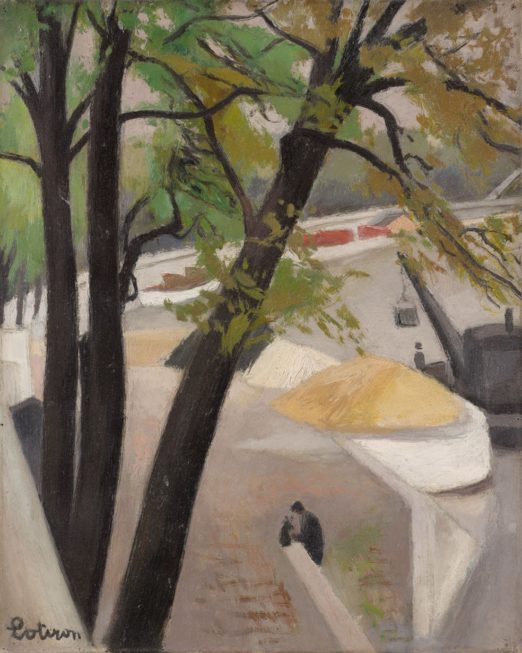Robert Lotiron (1886-1966): Everyday poetry
25 June — 4 Sept. 2022
Following the recent donations from the artist’s family and a couple of Parisian collectors, La Piscine has decided to devote a retrospective to the independent painter and engraver Robert Lotiron (1886-1966), a key representative of figurative art during the interwar period and a painter heavily invested in the movement behind the renewal of decorative arts during the 1930s and 1940s, which is of particular interest to the museum in Roubaix.
Born in Paris, he found his calling as a painter at a very young age after discovering the collection of impressionist painting owned by Docteur Viau, the family dentist. With his father intending for him to take over the family lace shop, he studied in England, without enthusiasm, between 1901 and 1903. However, on his return to Paris, he enrolled at the Académie Julian, where he attended the workshop of Jules Lefèbvre and became friends with Roger de La Fresnaye (1885-1925) and Louis Marcousis (1878-1941).
Initially influenced by impressionism, Robert Lotiron became a brief exponent of cubism, which marked his maturity with the expression of a strong synthesis of forms. His style developed from the 1920s in an entirely personal combination which mixes the memory of the naive sincerity of Henri Rousseau, the sense of the composition, the opposition of forms and the rhythm of the colours inherited from Cézanne and a limited palette rich with subtle nuances. During the interwar period, he joined a group of artists who subsequently exhibited in the Berthe Weill and Druet galleries. Lotiron then became one of the most conspicuous landscape artists of his time. This emphatic presence on the French artistic scene of this generation gained him a place, in 1937, at the retrospective of Masters of Independent Art, organised in Paris for the Exposition Internationale. His works were regularly purchased by the State and he received several orders for wall decorations during the 1930s.
Towards the end of the decade, his art became harsher without abandoning his chromatic sophistication. After the Second World War, he developed new subjects and developed his research by taking up lithography. His vision became more direct and stripped back.
The Musée des Beaux-Arts de Cambrai and the Musée du Mont-de-Piété de Bergues are partners in this project and will organise an exhibition dedicated to the engravings of Lotiron and a second to his drawings, respectively.
Committee made up of Patrick Descamps
Catalogue published for this exhibition
The design was made possible thanks to generous support from the Flanders Colours range of paints distributed by Tollens.



